Content Marketing 101: Top Benefits of Content Marketing at Each Stage of the Buying Journey
This is the third post in our Content Marketing 101 series outlining the benefits of Content Marketing.
Marketers talk a lot about the consumer buying journey – i.e., the process customers go through to make a purchase. But despite all the fanfare, it’s still kind of an opaque concept that varies based on the consumer and what they’re buying. Some purchases are so basic it’s a stretch to call them journeys (“buying jaunts” doesn’t have the same ring to it though), while other purchases require exhaustive research and planning (think of buying a candy bar vs. a new car).
So, the buying journey is more of a flexible sequence of touchpoints organized into four stages, rather than a rigid progression. Still, for most purchases, each of these touchpoints represents an opportunity for advertisers to connect with consumers and encourage them to choose their brand.
While Content Marketing is often thought of as a top-of-the-funnel initiative, there are a lot of ways brands can use content to guide consumers to a purchase. For Part 3 of our Content Marketing 101 series, we’ve outlined some ways Content Marketing campaigns can benefit your brand throughout the journey.
Top 10 Benefits of Content Marketing – By Stage in Buying Journey
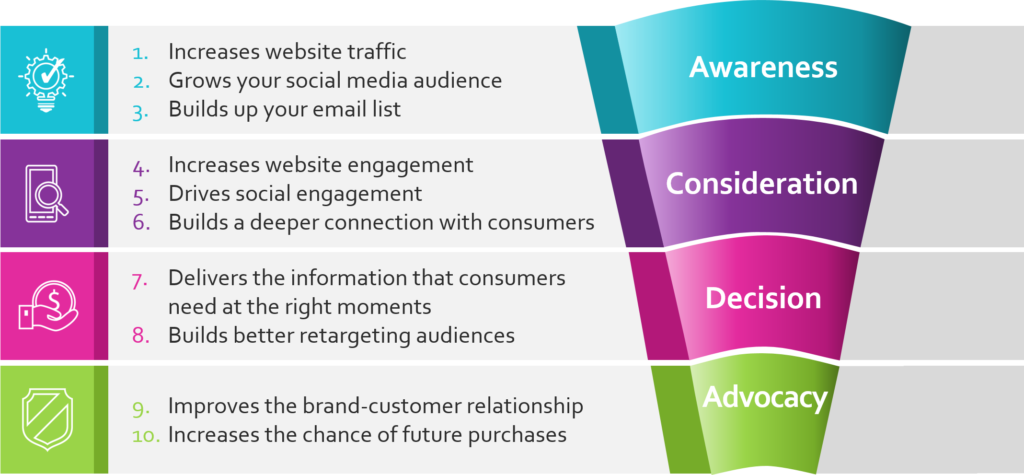
Awareness Stage
Increases website traffic
One of the goals of Content Marketing is to increase the quality and quantity of a brand’s website content, which increases website traffic for a couple of reasons. First, an ample amount of quality content gives consumers a reason to visit the site. Second, quality content makes it easier for consumers to find your site. The more content you publish, the higher you’ll rank in search engine results. And, higher search engine rankings mean more visitors (and more leads).
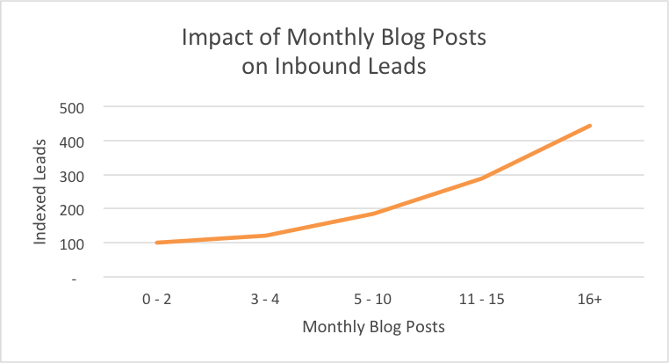
Source: HubSpot
But it’s not enough to just create content, your brand needs to create the right content. To rank well in search results, this usually means long-form, high-quality pieces.
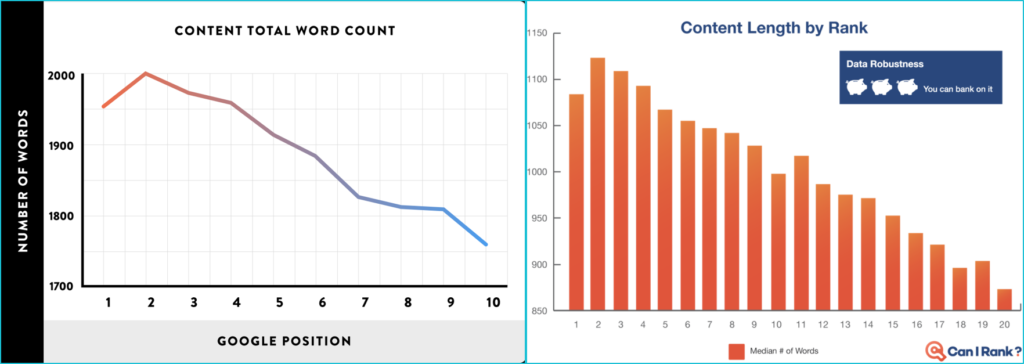 Sources: Backlinko and Can I Rank?
Sources: Backlinko and Can I Rank?
That doesn’t mean longer content equals quality content, it’s just that search engines prefer longer pieces. But, quality should always trump quantity. Here’s how Senior Google Webmaster Trend Analyst, John Mueller sums it up:
“In most cases, quality is better than quantity. Our algorithms explicitly try to find and recommend websites that provide content that’s of high quality, unique and compelling to users.”
Grows your social media audience
Growing a social media following requires staying active across platforms. While the ideal post-frequency varies by platform, typically accounts that post more often have more followers, especially on Twitter.
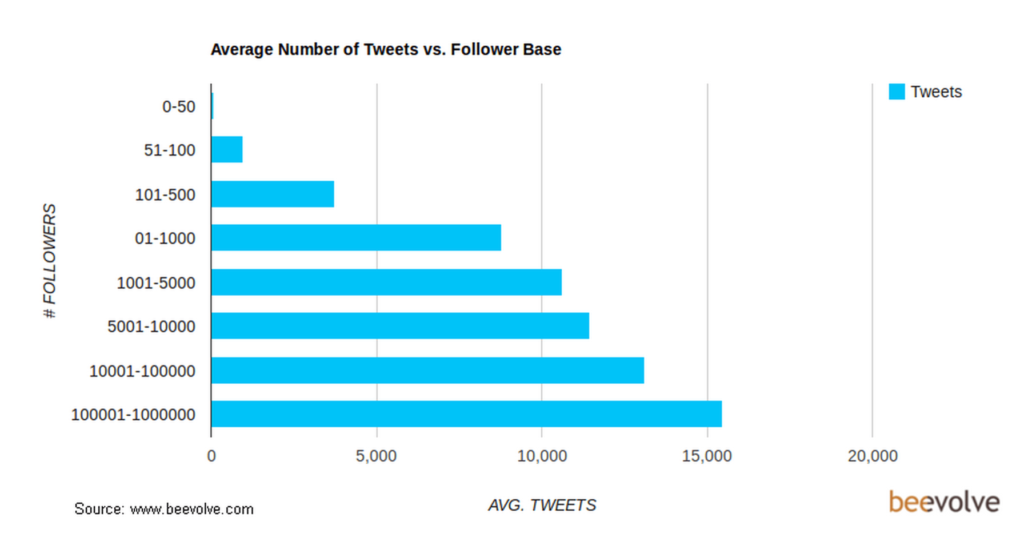
Content Marketing gives your brand a steady flow of high-quality original material to share so you can limit the amount of content your re-post from other brands.
Builds up your email list
Content Marketing helps build your brand’s email and prospect lists by producing strategic content pieces designed to promote profitable consumer action like filling out a form to download content or subscribing to your brand’s email newsletter. These actions (i.e., conversions) often require consumers to enter contact information like their email.
Related – [Infographic]: Top 10 Reasons Why Your Brand Needs Content Marketing
Consideration Stage
Increases website engagement
We covered how content increases website traffic, but what about once consumers are on the site? Content Marketing can increase website engagement by:
- Providing visitors with high-quality content they’ll want to consume.
- Encouraging users to visit related pages or download relevant content.
- Prompting users to contact your brand.
Drives social engagement
Building a large social following is good, but building a large social following that’s highly engaged is even better. Content Marketing fuels this engagement with content that resonates with audiences and encourages followers to interact. And the numbers back this up: blog posts with more than 1,500 words receive 57 percent more social shares than blogs with less than 400 words (again, still focus on the quality of that content, not the quantity).
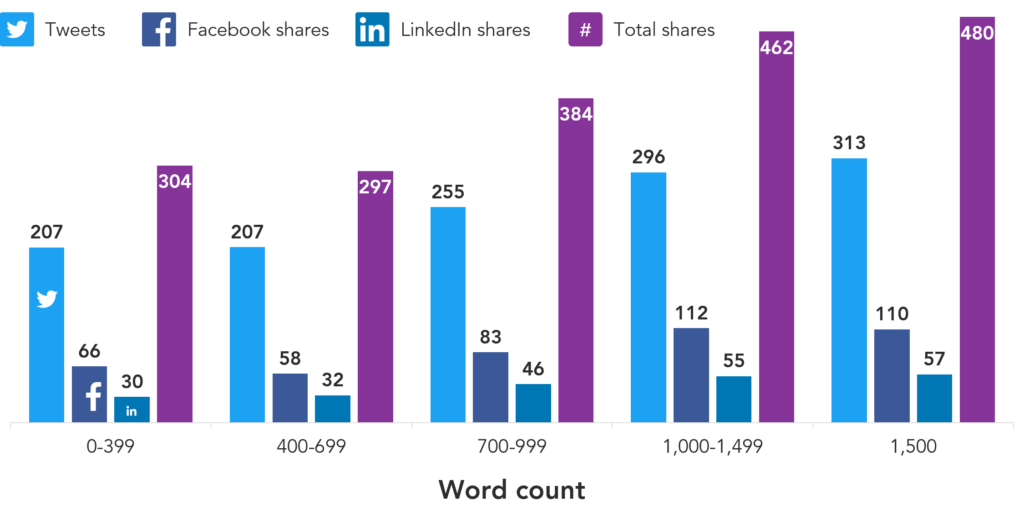 Source: Quick Sprout
Source: Quick Sprout
Builds a deeper connection with consumers
In the consideration stage, differentiating your brand is essential. To do this, brands need to communicate the unique value they provide to consumers in a way that resonates with target audiences on a deeper level. A great way to do that is with a common Content Marketing tactic – storytelling.
When done right, storytelling strengthens your relationships with your customers and target audiences. For example, Dollar Shave Club built its brand on an industry-disrupting value proposition – an online subscription model that shipped affordable razors directly to customers’ homes – and content that resonated with consumers on a deeper level – by making them laugh. DSC’s first displayed their Content Marketing prowess when they exploded onto the scene in 2012 with the video below, which the company uploaded to YouTube for free.
Over the past few years, the video accumulated more than 25 million (free) views as DSC captured more and more of the razor market, gained millions of subscribers and eventually cashed in for a cool $1 billion when Unilever decided to just buy the startup rather try to compete.
Here’s how DSC’s CMO Adam Weber once explained the company’s marketing success in an interview with eMarketer: “(It’s) because we can tell stories well. We can find a resonant idea, we can deliver it in a relatable voice and connect one-to-one… The way to reach (consumers is) to have that authentic feel, is to be relatable, allow guys to put themselves in your shoes as a brand, as opposed to talking at them or talking above them.”
Decision Stage
Delivers the information that consumers need at the right moments
On average, customers need about 4.5 online interactions with a brand before converting. That’s plenty of opportunities for your brand to deliver effective messaging to help a consumer choose your products and services. In some ways, Content Marketing can be a more effective approach than traditional advertising in this stage. High-quality content can project expertise and inspire trust by focusing on the needs and wants of consumers. Whereas advertising can come off as salesy by focusing on the features and benefits of a brand’s product and services.
Builds better retargeting audiences
This benefit of Content Marketing often flies under the radar. To better explain this, here’s a high-level overview of how retargeting works. When consumers visit a website, advertisers can place a tracking code known as a cookie in the user’s browser to identify them as they visit other sites. So, if this visitor leaves your site without converting, you can show them ads as they surf the web.
A basic retargeting strategy would be to serve a site visitor a generic brand ad after they visit a website. But this strategy ignores the visitor’s intent. A more effective strategy would be to segment users based on the content they consume on your site.
Let’s look at an example. Pretend you’re a financial services brand and a user visits your website to research retirement saving options. They visit a page about IRAs, indicating they’re interested in saving for retirement. By segmenting your retargeting audiences, you can now serve that user customized ad messaging like “Which IRA makes the most sense for you?” And, the more robust your site’s content, the more targeted you can get with this messaging.
Advocacy
Improves the brand-customer relationship
Publishing content on a regular basis helps brands connect with their customers. The more informative, entertaining and relevant that content is, the stronger the bond.
Bitly, the company behind a tool that shortens URLs, is a prime example of a brand who nailed this concept. To help customers understand their product better, the brand created an e-book that featured 37 unique ways real customers had used the tool and more than a dozen interviews with marketers from Bitly’s partner companies.
Increases the chance of future purchases
One of the main goals of Content Marketing is to build strong, personal and long-term relationships between brands and their consumers. This bond helps build customer trust in a brand, which leads to loyalty. And loyalty is huge for brands. Consider these stats:
- It costs 500 percent more to acquire new customers than it does to keep current ones
- Repeat buyers spend 33 percent more than new ones
- Building loyalty with 5 percent more customers would lead to an increased average profit per customer of between 25 and 100 percent
And, that doesn’t even factor in the added benefit of loyal customers recommending your brand to others and raving about you online.
Related – Content Marketing 101: Defining Content Marketing
Getting started with Content Marketing
This is just the start, there are plenty of other benefits to implementing Content Marketing. Realizing the full benefits of Content Marketing isn’t an overnight sensation. It requires a commitment to creating content on a regular basis, the dedication to continuously promote that content and a sound strategy to guide those efforts.
![]() Contact Mindstream Media Group to learn more about implementing or improving Content Marketing efforts for your brand.
Contact Mindstream Media Group to learn more about implementing or improving Content Marketing efforts for your brand.
Download our guide to learn everything you need to know to launch effective Content Marketing campaigns.
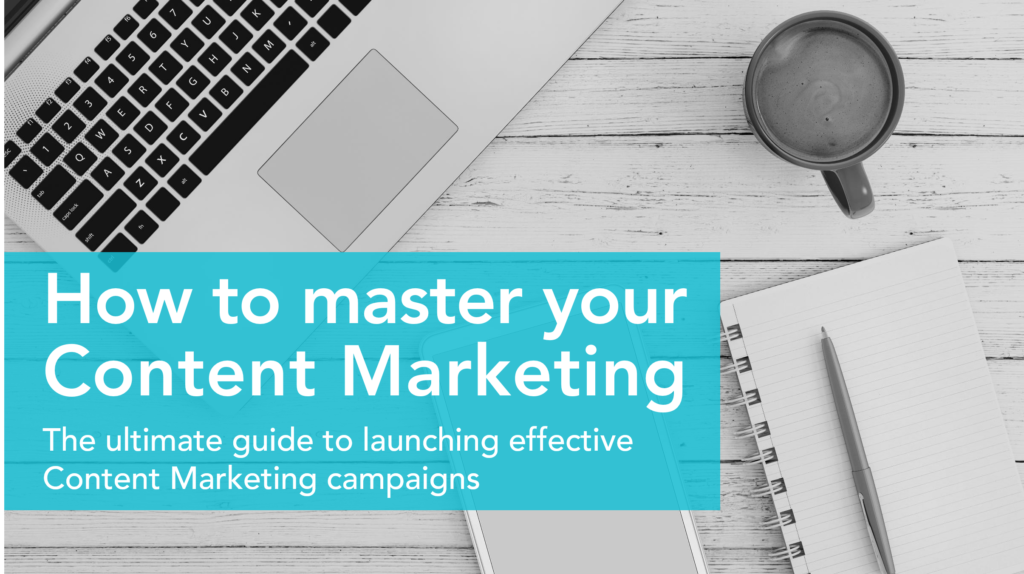
More from Mindstream Media Group

Meet the Mindstreamer – Chandler Swanner
Chandler Swanner’s interest in advertising dates back to her childhood. Her mother (and role model in life) was a Media […]

Third-Party Cookie Phase-Out: What Marketers Need to Know
Cookies are an essential part of internet usage, allowing websites to remember you and provide a more personalized experience. This […]

Meet the Mindstreamer – Kaya Bucarile
She plans and oversees media strategy for agency clients, working closely with project and platform managers to ensure that we […]
